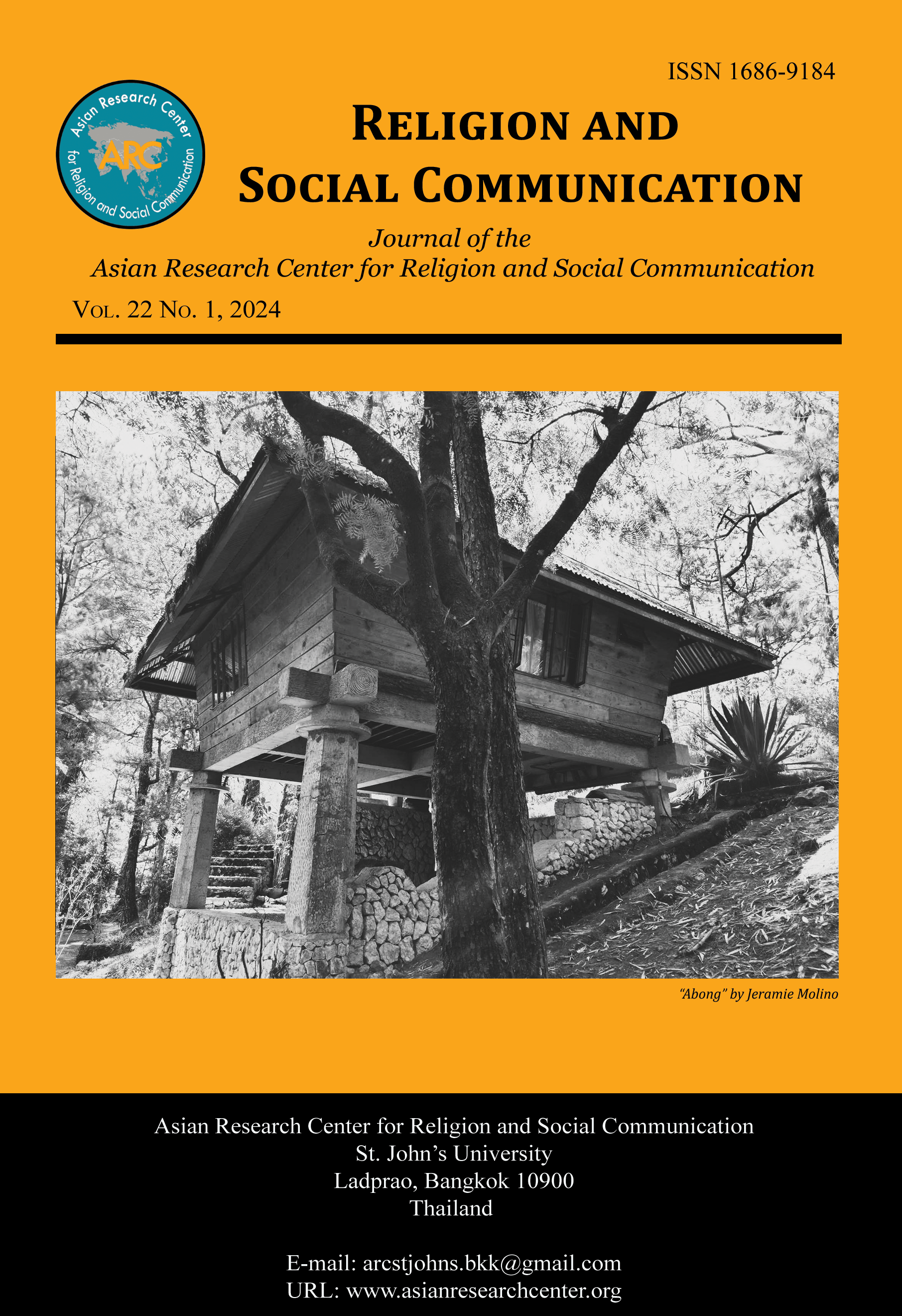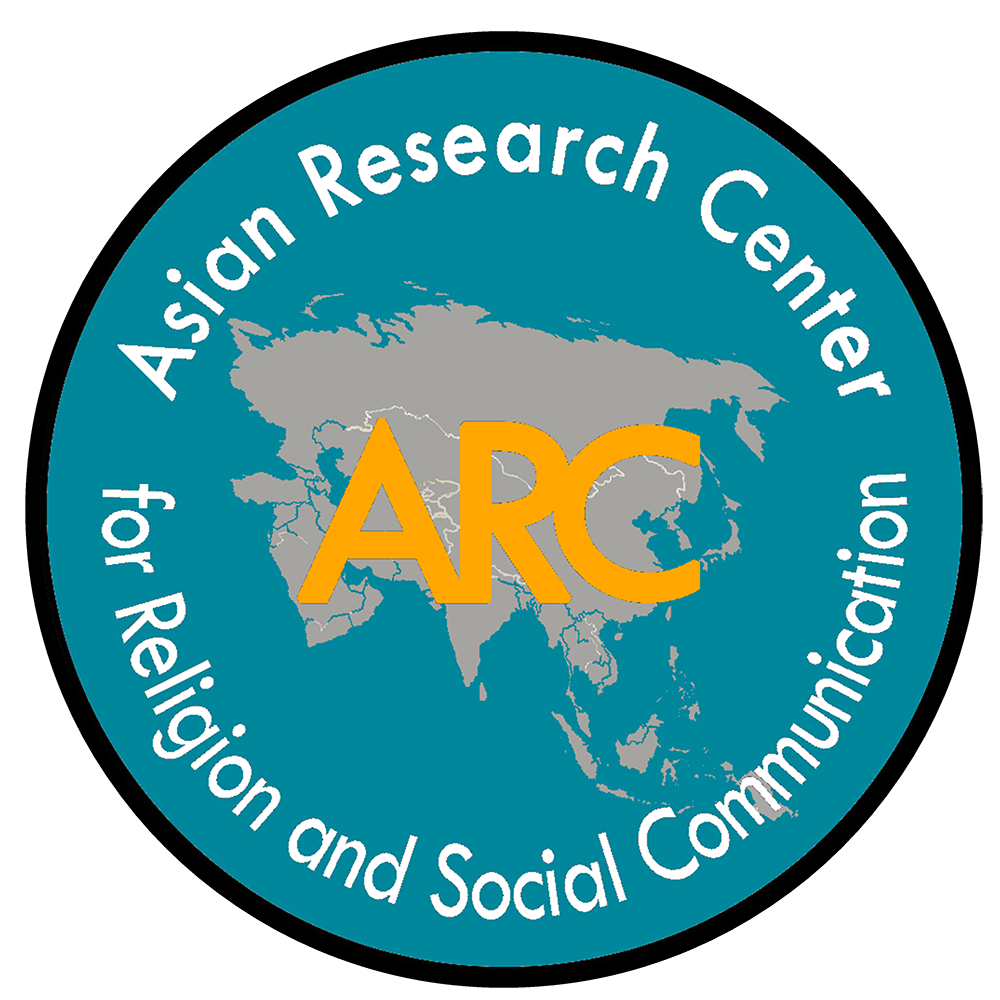The Significance of Food in the Parable of the Wedding Feast in Matthew 22:1-14 and the Kanyaw
Download
RELIGION AND SOCIAL COMMUNICATION VOLUME 22, NO. 1 (2024)
ISSN 1686-9184
Author
Fred F. Antonio, Jr.
Abstract
This study delves into the significance of food in Matthew 22:1-14, specifically exploring parallels between the Parable of the Wedding Feast and the Kanyaw festival of the Igorot people. Employing a qualitative-descriptive approach, the researcher adopts a hermeneutical spiral methodology involving the sequential steps of “See, Discern, and Act.” The research emphasizes five key themes that draw parallels between the biblical parable and the indigenous festivity. Firstly, the study highlights the importance of the invitation in both contexts. Whether it is the divine call in the parable or the cultural invitation of the Kanyaw, there is a common thread in the significance of extending and receiving invitations. Second, the celebration emerges as a significant theme, suggesting shared elements between the joyous gatherings depicted in the biblical narrative and the cultural festivities of the Igorot people.
The third theme revolves around the crucial role and preparation of food. This underscores the centrality of food in both the biblical narrative and the Kanyaw festival, shedding light on the cultural and spiritual dimensions associated with preparing and sharing meals. The fourth theme explores the responses of those invited, drawing parallels between the biblical account and participants' reactions in the Igorot celebration. Lastly, the study delves into the social implications of the feast in both contexts. By examining how the feast influences social dynamics and relationships, the research aims to offer an inculturated understanding of the feast in the parable's context. In essence, the study provides a nuanced exploration of the parallels between the biblical narrative and the indigenous festivity, contributing to a more comprehensive understanding of the cultural and spiritual dimensions of food and celebration in these contexts.
Keywords
Parable, Kanyaw, festivity, Igorot, food, kosher, non-kosher, wedding feast, Jesus, Jewish, thanksgiving, ritual, garment, exegesis, mambunong, mankotom, fiesta.
References
Acklin, Thomas. “The Theological, Spiritual, and Practical Meaning of the Eucharist.” September 18, 2011. https://maryourhelp.org/e-books/eucharist/The-Theological-Spiritual-and-Practical-Meaning-of-the-Eucharist.pdf.
Baucas, B. Traditional Belief and Cultural Practice in Benguet. Benguet: New Baguio Offset Press, 2003.
Catechism of the Catholic Church. Vatican City: Vatican Press, 1993.
Donohue, S.J., J. The Gospel in Parable: Metaphor, Narrative, and Theology in the Synoptic Gospels. USA: Fortress Press, 1988.
Furnal, J. A Theology of the Table: The Dominican Council. Oxford: Blackwell Publishing Ltd, 2011.
Gwynne, P. World Religion in Practice. MA: Blackwell Publishing, 2009.
Hill, D. The Gospel of Matthew. London: Butler & Tanner Ltd, 1972.
Hultgren, Arland J. Parables of Jesus. Cambridge: Wm. B. Eerdmans Publishing Co., 2002.
King, P., and L. Stager. Life in Biblical Israel. Kentucky: Westminster John Knox Press, 2001.
Korsmeyer, Carolyn. Making Sense of Taste: Food and Philosophy. USA: Cornell University Press, 1999.
Mann, T. Not by Word Alone: Food in the Hebrew Bible. North Carolina. DOI 10.1177/0020964313495515, 2013.
Montoya, A. Theology of Food: Eating and the Eucharist. United Kingdom: Wiley Blackwell Publishing house, 2009.
Montoya, A. The Theology of Food: Eating and the Eucharist. United Kingdom: Wiley-Blackwell, 2012. DOI: 10.1163/15709256-12341257.
Peterson, W. Performing Indigeneity in the Cordillera: Dance, Community, and Power in the Highlands of Luzon. Hawaii: University of Hawaii Press, 2010.
Posner, R. Marriage. Keter Books Israel program for scientific translation Ltd, 1973.
Raphael, C. A Feast of History. Jerusalem Tel Aviv Haifa: Steimatzky’s Agency Ltd, 1972.
Reid, B. Parable for Preachers. Quezon City: Claretian Communications, Inc., 2002.
Reid, O.P., E. The Gospel According to Matthew (New Collegeville Bible Commentary, New Testament 1). Collegeville, MN: The Liturgical Press 2005.
Roces, A. Fiesta. Hong Kong: Vera-Reyes, Inc., 1980.
Rohrbaugh, R. The Social Science and New Testament Interpretation. Massachusetts: Hendrickson Publisher, Inc., 1996.
Sacla, W. Treasury of Beliefs and Home Rituals of Benguet. Baguio City: BCF Printing Press, 1987.
Scola, A. Excerpt from the “Relativo” at the opening session of the XI General Assembly of the Synod of the Bishops on Eucharist. 2005.
Story, L. One Banquet with Many Courses (Luke 14:1-24). Virginia: Regent University, 2012.
The New American Bible. Makati City: St Paul’s Publication.
Trilling, W. The Gospel According to St. Matthew. Dublin: Cahill & Co. Limited Parkgate Printing Works, 1969.
Tumilang, Lorna. “What’s on the Menu? Cañao with Watwat and Pinuneg.” Retrieved from http://www.baguiomidlandcourier.com.ph/anniv12_article.asp?mode=anniv12/supplements/tumilang.txt
Watson, J., and M. Caldwell. The Culture of Food and Eating. MA: Blackwell Publishing Ltd, 2008.
Webster, J. That One Might Not Fall: A New Testament Theology of Food. SAGE North Carolina, 2013.
Wilkins, J., and S. Hill. Food in the Ancient World. MA: Wiley Blackwell Publishing House, 2006.
Wilson, C. For I Was Hungry, and You Gave Me Food. OR: Picwick Publication, 2014.
Wirzba, N. Food for Theologians. SAGE North Carolina, 2013. DOI: 10.1177/0020964395518.
Witherup, S.S., R. Matthew: God with Us (Spiritual Commentaries). NY: New City Press 2000.
Zanchettin, L. Matthew. Mumbai: St Paul Press Training School, 1997.
PAGES 34-57
DOI: https://doi.org/10.62461/FFA120523
Submitted: 11.15.2023; Accepted: 12.5.2023; Published: 1.31.2024




